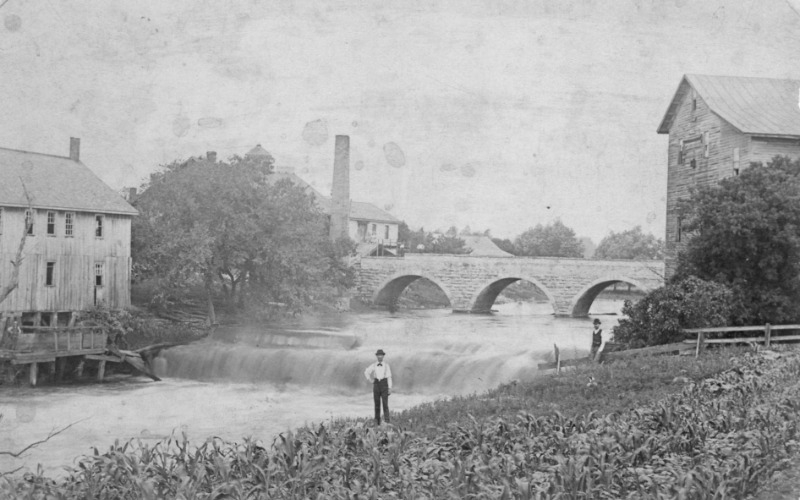The Falls
The Falls
The Falls…. The most significant landmark in the Cascade area is the waterfall on the North Fork of the Maquoketa River. Indeed, the falls gave Cascade its name and the original impetus for settlement of American and Europeans here involved the potential waterpower the falls provided for mills and industry. In the centuries prior to the occupation of the area by the pioneers, no doubt the falls were well known to the Indigenous peoples who lived in the area as the falls required a canoe portage and likely had cultural importance as well as providing an opportunity for fishing. Today the falls, located in the town center in a city park, provide a recreational opportunity as well as a scenic vista
Indigenous people have made Northeast Iowa their home for a very, very long time. Native peoples utilized the Maquoketa River Valley area for centuries. Beginning about 13,000 years ago people utilizing hunting and gathering lifeways entered the area. Big game hunting of bison and other large ice-age animals was central to their economy but gathering edible and otherwise useful plants, roots, nuts and fruits, hunting and trapping small game and fishing, also provided especially important food sources. Iowa archaeologists describe this culture as the Paleoindian period. About 10,000 years ago Archaic culture became prevalent which featured a greater reliance on the gathering of plant resources and the eventual beginnings of agriculture about 3,000 years ago. The ice-age mammals had long disappeared, but hunting bison and other game animals were still especially important. During this period and later, Indigenous groups seasonally occupied caves and rock shelters near Cascade. Archaeologists identify the Woodland culture beginning about 2800 years ago. Pottery appears at living sites as does archery. During the late Woodland period, the Hopewell Culture and their neighbors were marked by increasing urbanization, greater reliance on agriculture with maize making its appearance, extensive trade routes and the construction of large earthen mounds and other earthworks. Peoples in our area certainly were part of these networks. By the1200s the Oneota Culture occupied much of Iowa, featuring earth lodge villages populated by people who focused on farming and bison hunting. Later historical tribes had roots in the Oneota culture including the Ioway in our area and the Ho-Chunk(Winnebago) living just to our north. In the 1600s we are now beginning to enter the period of contact with the Europeans. The European settlers, traders, missionaries, and military brought huge changes to the Indigenous peoples. European diseases to which native peoples had little immunity resulted in epidemics that devastated native populations and in combination with competition over trade and land, led to migration. Members of the Illinek confederation were noted in eastern Iowa by the first French traders and missionaries. Later the Sauk and Mesquakies came to dominate the lands that became Eastern Iowa. In the early 1800s many tribal groups from further east were forced to journey through Iowa enroute to new lands west of Missouri, spending months or years in the state as they were pushed to new homes in Kansas and Oklahoma by the US government. A few Mesquakie families clung to refuges in areas of Iowa just to our southwest and were eventually joined by fellow tribal members who found life in the western land assigned to them difficult. The Mesquakie settlement at Tama was recognized by the state and eventually Federal Government. Native peoples shaped their natural environments, building cultures marked by impressive developments in art, ceremony, ingenious tools, and effective agricultural practices. They have left much evidence that Cascade, “The Place We Call Home,” has been a good place to live for a very, very long time
















 Launch the media gallery 1 player
Launch the media gallery 1 player